Unit 6 AP Human Geo
5.0(1)
5.0(1)
Card Sorting
1/70
Earn XP
Description and Tags
Study Analytics
Name | Mastery | Learn | Test | Matching | Spaced |
|---|
No study sessions yet.
71 Terms
1
New cards
urbanization
refers to the movement of people to towns/cities and the resulting expansion of the rural countryside
2
New cards
influences on urbanization
changes in transportation and communication, population growth, migration, economic
development, and government policies
development, and government policies
3
New cards
central city
an urban settlement that has been legally incorporated into an independent, self-governing unit known as a municipality
4
New cards
urban area
consists of a central city and its surrounding built-up suburbs.
5
New cards
urbanized area
is an urban area with at least 50,000
inhabitants
inhabitants
6
New cards
urban cluster
an urban area with between 2,500 and 50,000 inhabitants
7
New cards
Central business district (CBD)
the most central place in a city, with a high concentration of public services, business services, and consumer services
8
New cards
megacity
an urban settlement with a total population in excess of 10 million people (mainly in developing countries)
9
New cards
metacity
has more than 20 million people
10
New cards
network cities
Two or more independent cities cooperate because they perform complementary functions aided by fast transportation & communication infrastructure
11
New cards
suburb
a residential or commercial area situated within an urban area but outside the central city
12
New cards
annexation
the process of legally adding land area to a city
13
New cards
causes of rise of suburbs
\-Prefab Housing Production
\-More land at cheaper cost
\-Social and demographic trends – white flight, fear of crime
\-More land at cheaper cost
\-Social and demographic trends – white flight, fear of crime
14
New cards
sprawl
the development of low-density suburbs in locations not contiguous to the existing built-up area.
15
New cards
density gradient
density change in an urban area-number of houses per unit of land diminishes as distance from the center city increases
16
New cards
smart growth
Legislation to limit suburban growth and preserve farmland
17
New cards
edge cities
a relatively large urban area situated on the outskirts of a city, typically beside a major road.
18
New cards
exurb
a district outside a city, especially a prosperous area beyond the suburbs. More rural and less walkable than a suburb.
19
New cards
boomburb
an outlying residential district of a city that is expanding rapidly.
20
New cards
world cities and globalization
\-Main linkage is through economics
\-Many of these cities are international headquarters for businesses; linked to other parts of the world through finance & banking as well
\-Many of these cities are international headquarters for businesses; linked to other parts of the world through finance & banking as well
21
New cards
urban hierarchy
Refers to size & functional complexity of cities
22
New cards
rank-size rule
Used to describe distribution of city populations among urban areas in a developed country
23
New cards
primate city
An urban center that is disproportionately larger than the second largest city in a country that dominates the country’s social, political and economic activities
24
New cards
gravity model
Used to predict the interaction between two cities based on:
* population sizes
* distance between the places
* number of migrants moving from one place to the other
* the flow of trade goods between the two locations
* population sizes
* distance between the places
* number of migrants moving from one place to the other
* the flow of trade goods between the two locations
25
New cards
central place theory
based on:
Range: maximum distance people are willing to travel to use a
service
Threshold: minimum number of people needed to support a
service
Higher-order services have larger ranges & thresholds
Range: maximum distance people are willing to travel to use a
service
Threshold: minimum number of people needed to support a
service
Higher-order services have larger ranges & thresholds
26
New cards
concentric zone model
Suggests that households in older homes are much more likely to live in an inner ring and the household in a newer house in an outer ring
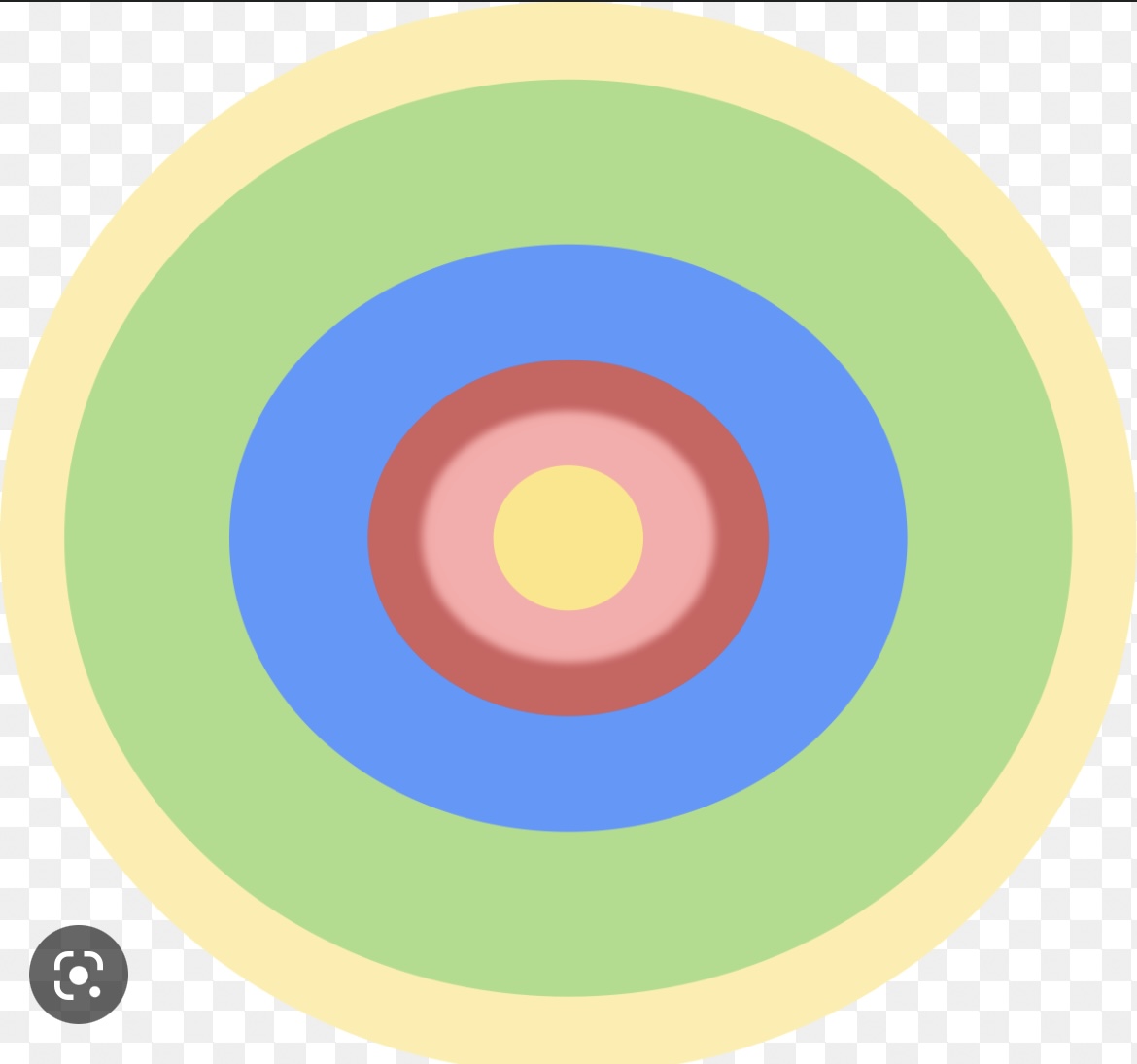
27
New cards
sector model
Suggests that the household with a more modest income is unlikely to live in the same sector of the city as the household with the higher income
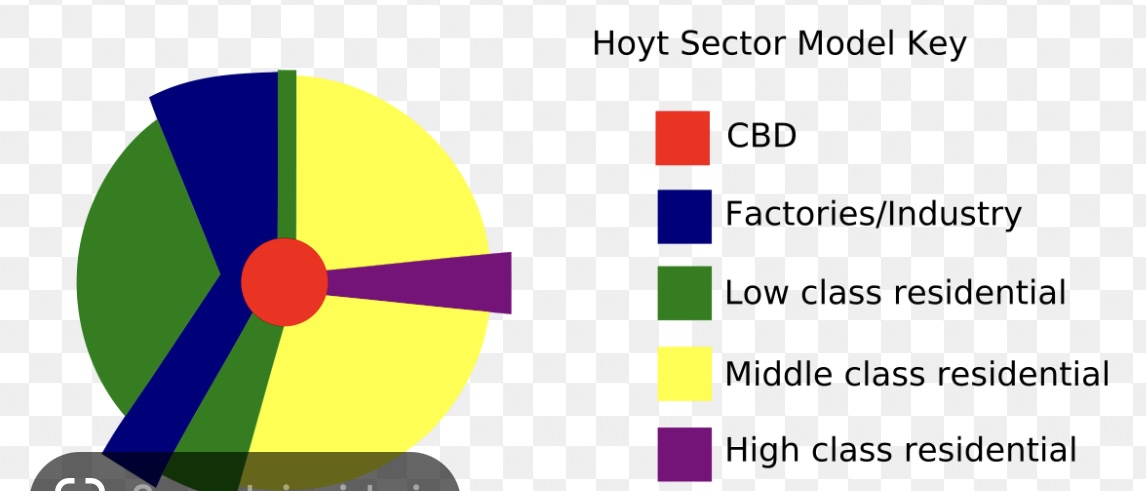
28
New cards
multiple nuclei model
Suggests people with the same ethnic or racial background are likely to live near each other
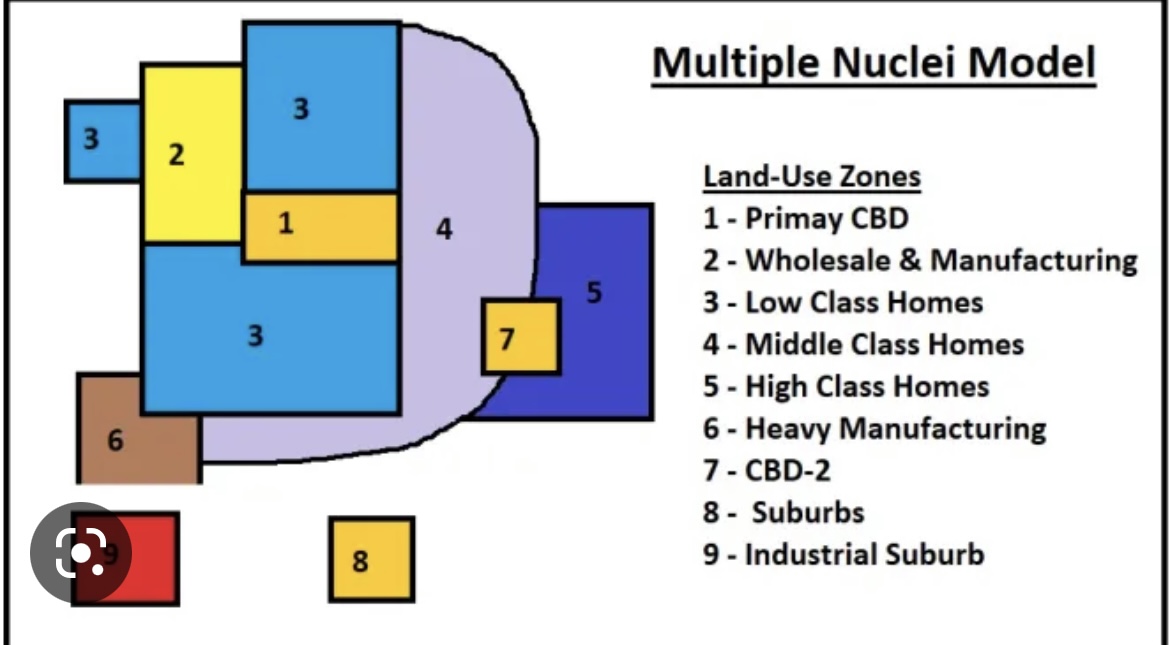
29
New cards
galactic (peripheral) model
where an urban area consists of an inner city surrounded by large suburban residential and service nodes or nuclei tied together by a beltway or ring road.
30
New cards
European city structure
* The CBD will have high-density residential areas. It will also feature consumer services directed to a residential population
* The historic core will be preserved and skyscrapers will be absent
* Higher income residencies will be in the center, lower incomes
on the periphery
* The historic core will be preserved and skyscrapers will be absent
* Higher income residencies will be in the center, lower incomes
on the periphery
31
New cards
Latin American City Model
a spatial city model that includes a prestigious, commercial axis (spine)
which emanates outward from the CBD and is surrounded by
a peripheral area containing squatter settlements; the city structure
can be attributed to colonialism, the rapid rise of industrialization,
and rapid population increase
which emanates outward from the CBD and is surrounded by
a peripheral area containing squatter settlements; the city structure
can be attributed to colonialism, the rapid rise of industrialization,
and rapid population increase
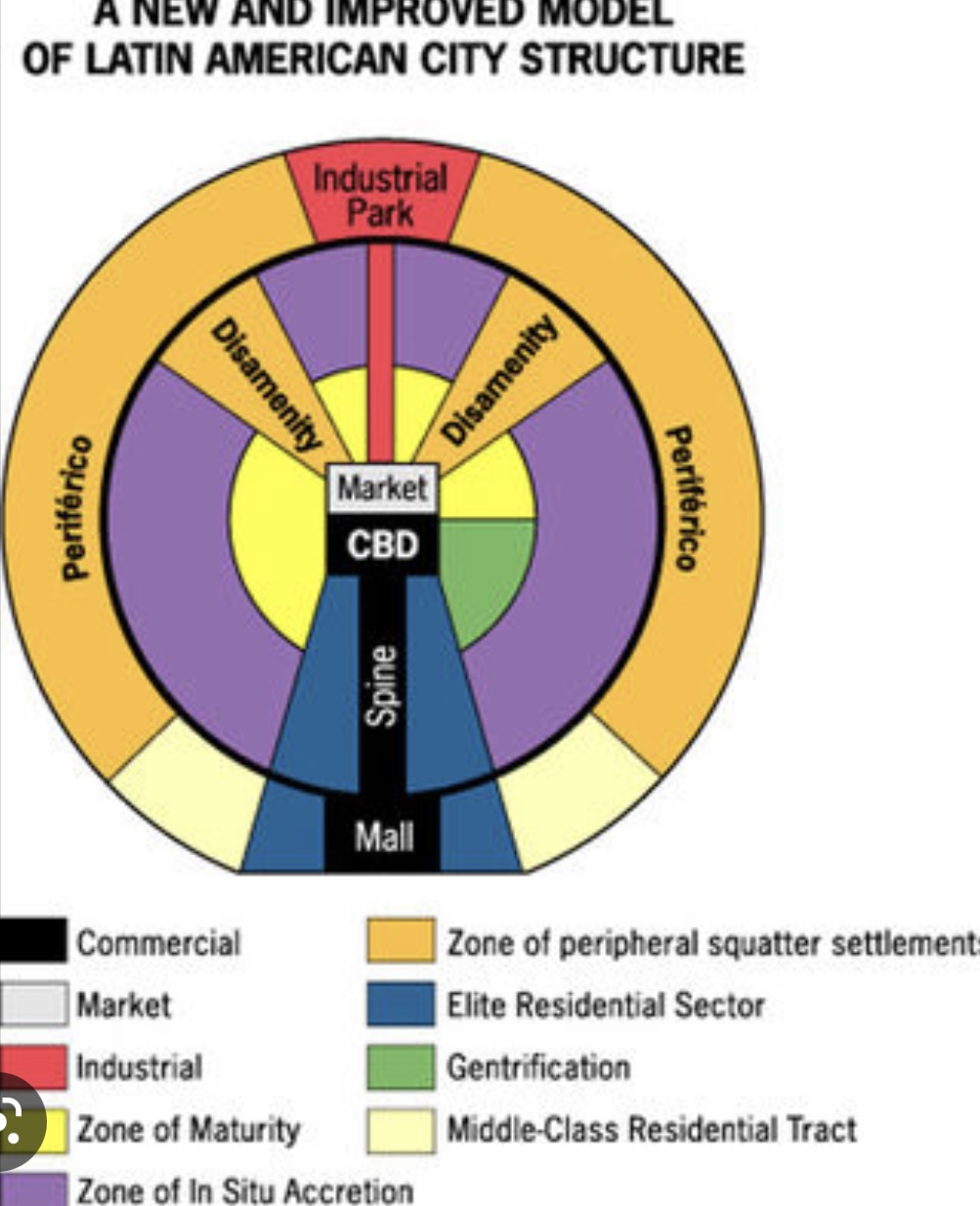
32
New cards
Southeast Asia City Model
a spatial city model that includes an old colonial port zone that is the
focal point of the city reflecting a city oriented around exports, and
radiating outward from the port zone are the Western commercial zone
and Alien commercial zone
focal point of the city reflecting a city oriented around exports, and
radiating outward from the port zone are the Western commercial zone
and Alien commercial zone
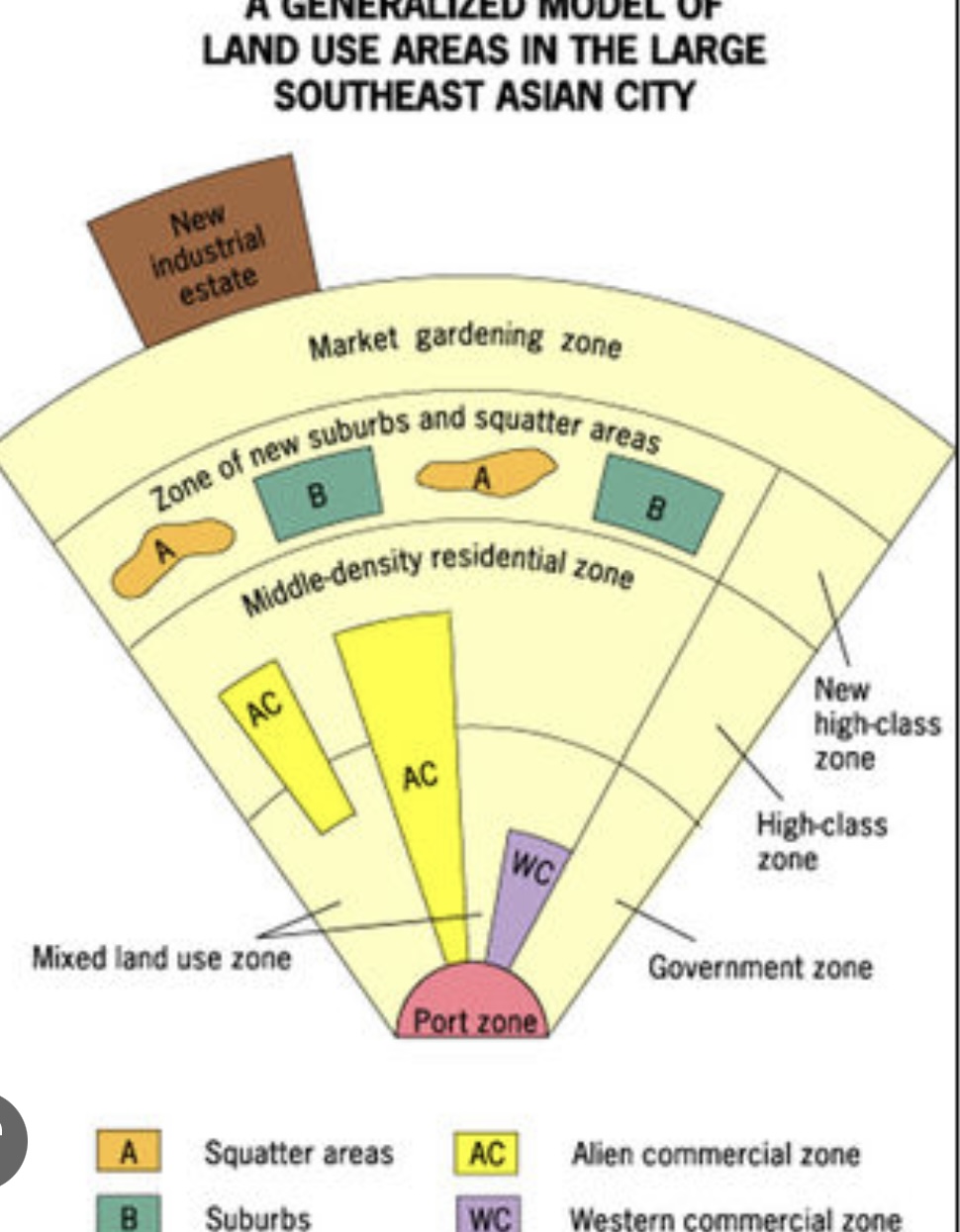
33
New cards
Sub-Saharan African City Model
a spatial city model that is difficult to formulate due to the imprint of European colonialism, but often consists of a colonial CBD as well as a traditional CBD, and a market zone that is surrounded by squatter settlements (informal satellite townships)
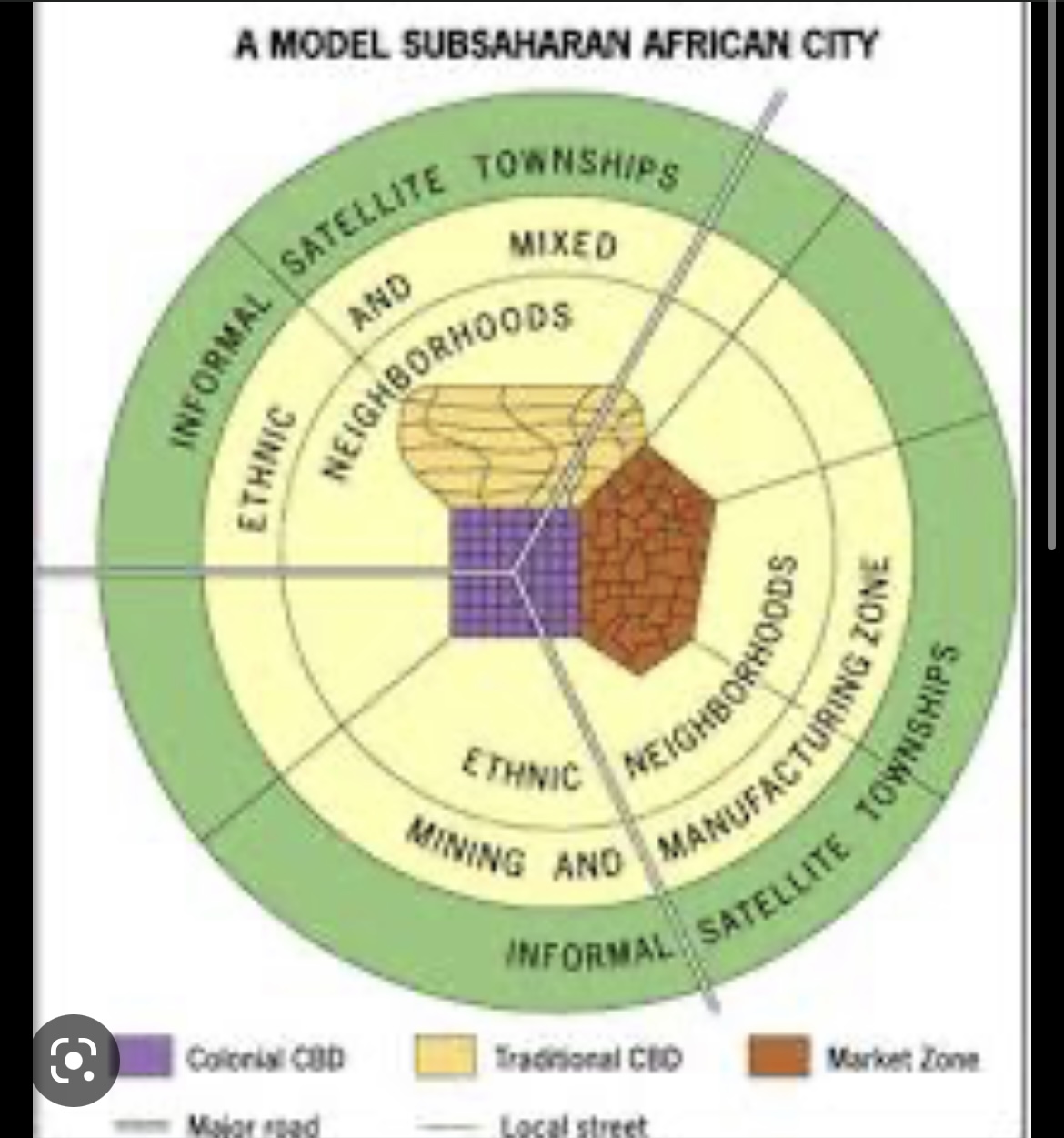
34
New cards
housing discrimination
discrimination in the purchase or rental of housing on the basis of race, gender, ethnicity, age, national origin, sexual orientation, gender identity, marital status, or veteran status
35
New cards
redlining
a discriminatory banking practice of refusing to loan money to people in “risky” neighborhoods, creating a downward spiral
in which poor neighborhoods became increasingly rundown
in which poor neighborhoods became increasingly rundown
36
New cards
blockbusting
a real estate technique used to encourage people to sell their property at a very low price by giving the impression that the neighborhood was changing for the worse, especially in reference to minorities moving in and led to a significant turnover in housing which benefited real estate agents and led to the “white flight” to the suburbs
37
New cards
affordable housing
residential units that are economical for the section of society whose income is below the median household income
38
New cards
access to services
measure of people’s ability to pay for services without financial hardship (health services, infrastructure)
39
New cards
high crime rates
contributing factors include lack of job availability, less access to quality schools, and real or perceived lack of opportunity
40
New cards
environmental injustice
disproportionate exposure to communities of color and the poor to pollution and its effects on health and the environment; includes inadequate access to healthy food, inadequate transportation, unsafe neighborhoods with poor air and water quality
41
New cards
disamenity zone
area located within the city characterized by slums and the homeless and in extreme cases are controlled by gangs or drug lords
42
New cards
zone of abandonment
areas with lack of jobs, declining land values and falling demand that cause people to leave and businesses to close
43
New cards
squatter settlements
residential areas characterized by extreme poverty with shelters constructed of found materials (scrap wood, etc.) that usually exist on land just outside of cities that is neither owned or rented by its occupants with little or no access to water, sewage, garbage removal, or education
44
New cards
land tenure
system regulating the rights to ownership and control and usage of land
45
New cards
inclusionary zoning
planning ordinances that provide affordable housing to people with low to moderate incomes
46
New cards
local food movements
food that is produced within a short distance of where it is consumed, often accompanied by a social structure and supply chain different from the large-scale supermarket system
47
New cards
urban renewal
the redevelopment of areas within an urban area, typically neighborhoods in economic decline
48
New cards
gentrification
the restoration of deteriorated urban areas by wealthier (mostly middle-income) people who move into, renovate, and restore housing and sometimes businesses
49
New cards
negative impacts of gentrification
displaces poorer residents
disregards the needs and interests of vulnerable groups
disregards lawful rights of vulnerable groups (e.g. coercion)
disproportionately improves quality of life
disregards the needs and interests of vulnerable groups
disregards lawful rights of vulnerable groups (e.g. coercion)
disproportionately improves quality of life
50
New cards
positive impacts of gentrification
new employment opportunities
improved housing
improved infrastructure
increase in visitors/tourism
improved housing
improved infrastructure
increase in visitors/tourism
51
New cards
functional fragmentation of government
refers to the way governmental institutions are dispersed between many local agencies including state, county, city and neighborhood levels
52
New cards
local agency interactions
* collaboratively to provide services and reduce common threats
* competitively through taxation and/or land use decisions that can be harmful to an entire region
* competitively through taxation and/or land use decisions that can be harmful to an entire region
53
New cards
urban sustainability
the idea that a city can meet the needs of the present without compromising the ability of future generations to meet theirs in terms of economic, environmental and social impact
54
New cards
challenges to sustainability
managing suburban sprawl, sanitation needs, climate change, air and water quality standards, the ecological footprint of cities, and energy use
55
New cards
impacts of sustainability
regional planning efforts, remediation and redevelopment of brownfields, establishment of urban growth boundaries (e.g. greenbelts), and farmland protection policies
56
New cards
low density housing
land use pattern meant for a small number of residential homes that include a lot of open space and contain the fewest people per geographic unit
57
New cards
medium density housing
land use pattern in which residential units include multi-unit housing, such as townhomes as well as single-unit housing
58
New cards
high density housing
land use pattern in which land is occupied by residential units that include multi-unit housing such as high-rise buildings and contain the highest people per geographic unit
59
New cards
sustainable development
meeting human development goals while sustaining the natural systems that provide the natural resources upon which the economy and society depend
60
New cards
zoning
classifying land and identifying the types of activities that are permitted
61
New cards
mixed land use
land development that blends a combination of residential, commercial, cultural, institutional and/or industrial uses
62
New cards
walkability
a measure of how friendly an urban area is to walking
63
New cards
transportation-oriented development
land use pattern that includes a mix of commercial, residential, office and entertainment space centered around or located near public transport; dense, walkable, mixed use development near transit that attracts people to connect communities
64
New cards
smart growth policies
urban planning that avoids urban sprawl and focuses on long term implications with sustainable design initiatives and guides development into more convenient patterns and into areas where infrastructure allows growth to be sustained over the long term
65
New cards
new urbanism
smart growth policy that creates walk-able, mixed land use neighborhoods with commercial and residential areas
66
New cards
green belt
an area of natural land on which building is restricted and whose main purpose is to curb the outward expansion of a large urban area
67
New cards
slow growth cities
smart growth policies that concentrate growth in walkable urban centers to decrease sprawl
68
New cards
sustainability pros
reduction of urban sprawl
improved walkability
improved transportation
improved and diverse housing options
improved livability
promotion of sustainable options
improved walkability
improved transportation
improved and diverse housing options
improved livability
promotion of sustainable options
69
New cards
sustainability cons
increased housing costs
de facto segregation
loss of historical character/place character
de facto segregation
loss of historical character/place character
70
New cards
quantitive date
census and survey data provide information about changes in population composition and size
71
New cards
qualitative date
field studies and narratives provide information about individual attitudes toward urban change